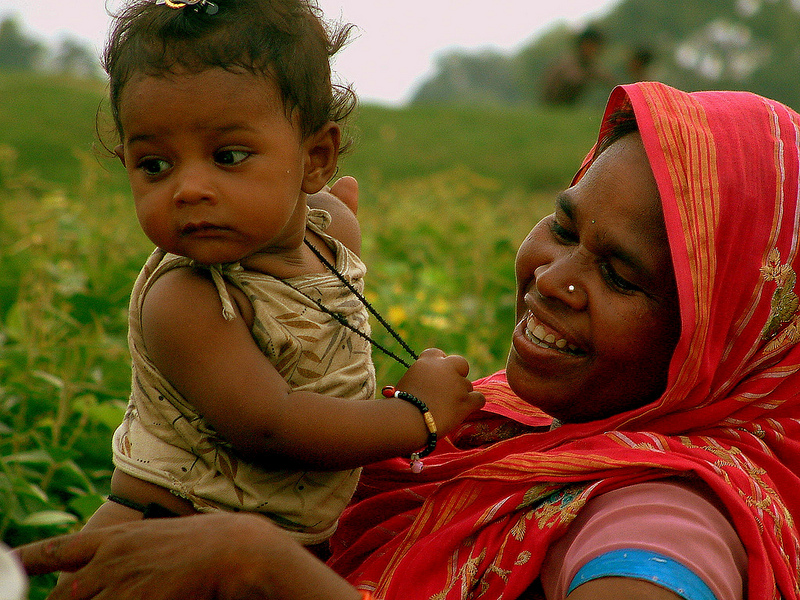Can Financial Inclusion Change Gender Norms?
Editor’s note: This cross-post originally appeared on the CGAP blog
Imagine a young married woman living in a small village in rural India. If the opportunities to work in the village are limited, she may choose to supplement her household’s income by participating in India’s federal workfare program — the Mahatma Gandhi National Rural Employment Guarantee Scheme (MGNREGS) — which provides rural households up to 100 days of work at a fixed minimum wage. In this scenario, the wages she earns through this scheme are deposited into a single household account, which is held in her husband’s name. What happens next? If consistent with prevailing gender identity norms in parts of rural India, her husband may decide how her wages are spent or require her to be accompanied by a male relative when she travels to the village market to use her earnings. In this scenario, our imaginary protagonist is working and depositing her earnings into a formal bank account.
But does this mean that she is economically empowered?

On November 14, 2016, Innovations for Poverty Action and CGAP, with support of the Bill & Melinda Gates Foundation, convened a group of researchers, practitioners, and donors for a day-long workshop in Washington, D.C., to explore this and other questions surrounding gender and financial inclusion. In addition to discussing the supply side and legal regulatory constraints faced by women in accessing financial services, a portion of the agenda addressed the role of financial inclusion interventions in responding to the social norms constraints that may limit women’s economic outcomes. The discussion included rigorous evidence on two promising, parallel approaches to work in this space: approaches that focus on alleviating the symptoms of these norms to enhance access to finance, and approaches that have the potential to change prevailing gender norms themselves.
A growing body of evidence shows that, in the short term, interventions designed with specific gender-based barriers in mind can make it easier for women to use financial tools to overcome gender norms that limit their economic lives. For example, Natalia Rigol of Harvard University presented a study which sought to increase women’s business outcomes. In India, a country with particularly restrictive gender norms, her team identified inadequate peer support among women entrepreneurs to be one important barrier limiting financial inclusion. They hypothesized that involving a friend in a two-day training program could allow women to strengthen their social support networks and thus impact economic outcomes. A rigorous evaluation found that inviting women to a business training program with a friend (compared to attending alone) led participants to double their demand for loans and significantly expand their business activity, resulting in higher household income.
These results demonstrate how design innovations may improve women’s economic success in the short run, but they do not tell us much about whether they led to any long-term changes in women’s empowerment as decision-makers (for example, how much control they had over how loans were invested in their businesses and income was spent in the household). It is an important question: Can financial inclusion play a role in shifting the bargaining position of women within the household and contribute to impacts on women’s empowerment in the long run, even changing gender norms themselves?
Presenters Jenny Aker of Tufts University, Simone Schaner of Dartmouth College, and Rigol have generated evidence to suggest that financial products which provide women with greater privacy and control over their own funds can, in fact, increase their economic bargaining power in the longer term. One example from Niger tested the impact of delivering social benefits transfers electronically, compared to cash transfers. Women who received their transfers electronically, which allowed them to receive resources directly into their account with greater privacy and control over the transfer, reported increased access to land shared with their spouses, improved mobility, and more involvement in key agricultural activities. Additionally, receiving payments electronically led recipients to spend more money on clothing and a more diverse diet for the household, suggesting that the women had gained more control over household spending decisions.
A similar approach in India opened bank accounts and provided basic financial literacy training for women who were employees of the MGNREGS program. Those who were provided the training and received the government transfer into their accounts, as compared to receiving the transfer into a joint household account, were more likely to have worked for pay in the past year, reported higher earnings, and made purchases with their own money. Being able to control the final use of their own earnings may have removed disincentives for these women to participate in the workforce. The impact was especially pronounced among women from castes traditionally limited by restrictive gender norms.
Women face a variety of constraints, supply side, legal regulatory and social norms, all of which limit economic outcomes and act as barriers to success. The effort to empower women through financial inclusion requires more than simply providing financial products to women. Early evidence suggests that financial products designed with gender norms in mind not only allow women to cope with the constraints caused by prevailing social norms, but they have the ability to affect the underlying norms themselves.
Nevertheless, changing norms is a long process and is not linear, and researchers have more work to do to evaluate their long term impacts and confirm that we are working towards achieving lasting, meaningful improvements for women.












